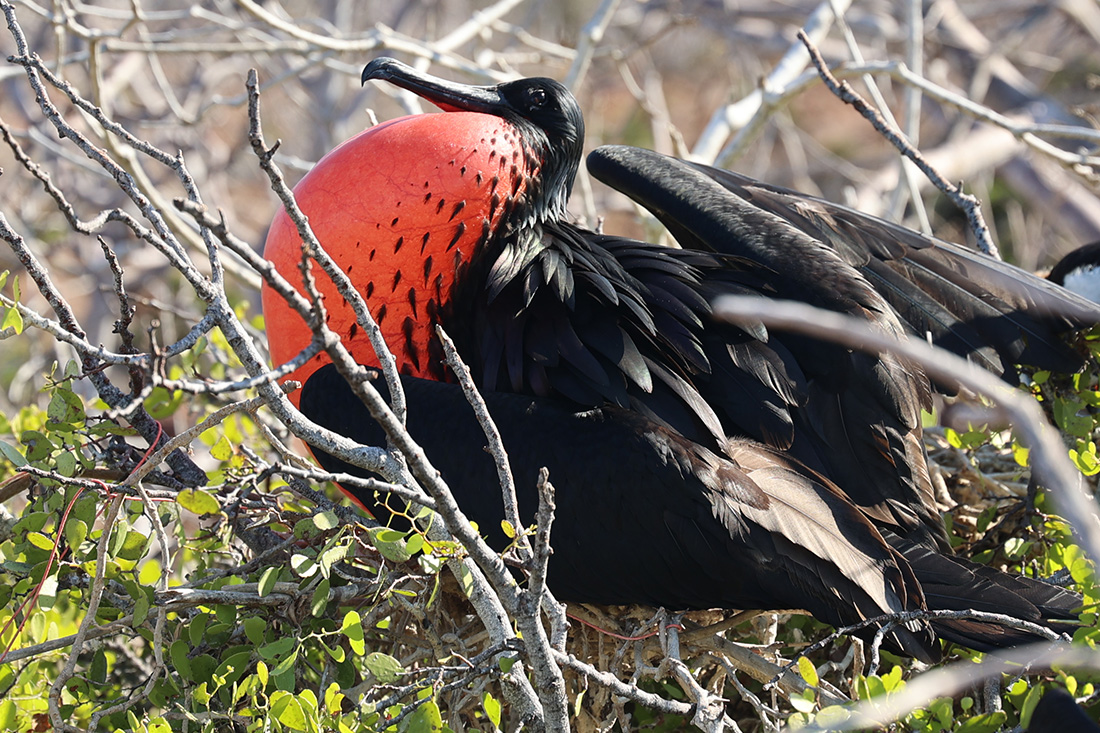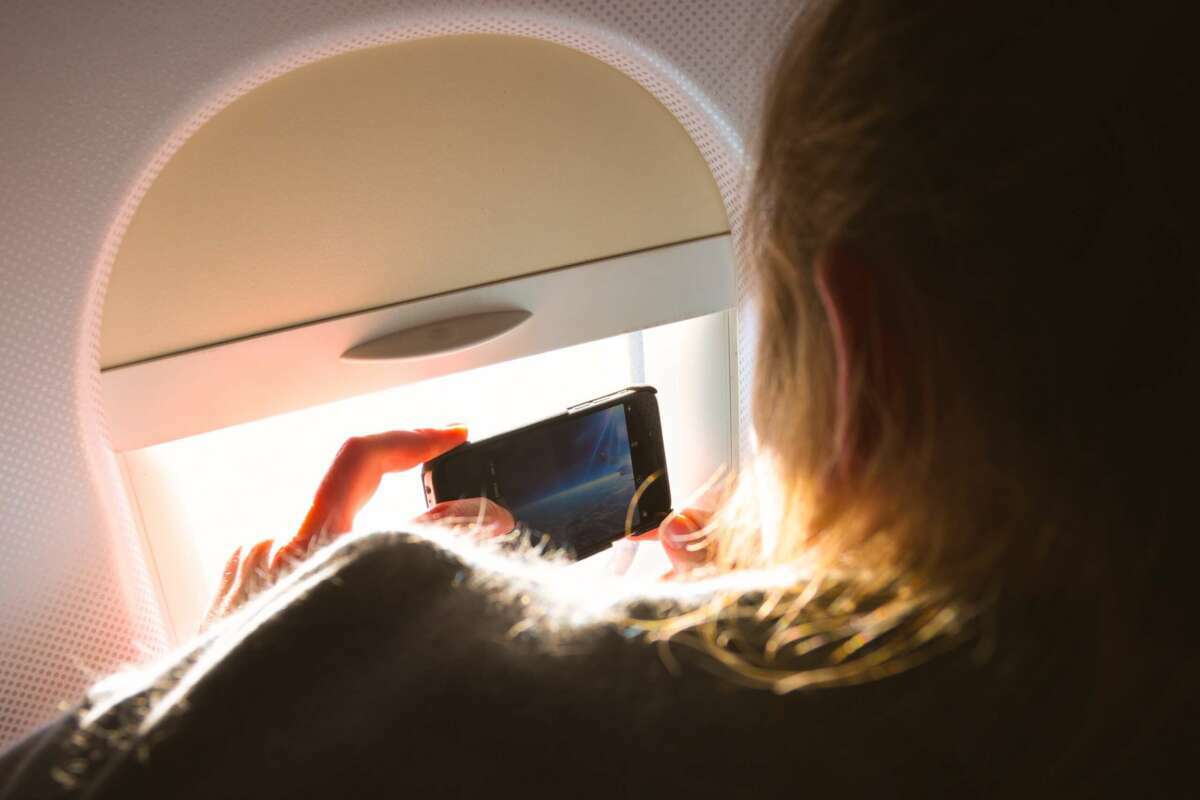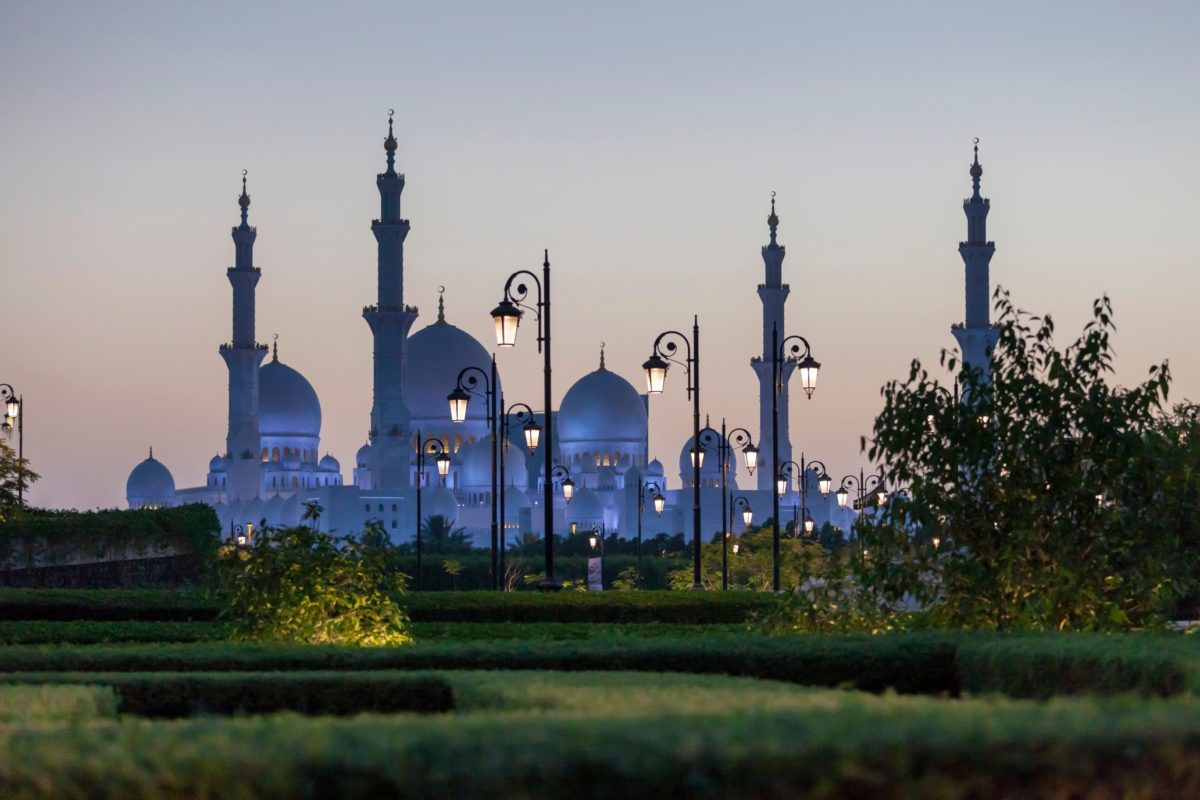The highlight of a visit to North Seymour Island in the Galapagos archipelago is seeing the large male Magnificent Frigatebirds. During mating season they inflate their gular sacs, which are vivid red, in hopes of attracting a female flying overhead. But that’s not the only wildlife to spot here. We’re sharing our best photos of a recent hike on North Seymour Island in the Galapagos, home to marine iguanas, locusts, lava lizards, sea lions and a variety of mating sea birds, including the male Magnificent Frigatebird and its bright red sac.
what’s it like on North Seymour Island in the Galapagos?
North Seymour Island, like many of the islands in the Galapagos archipelago, is formed from black lava flow. The coastline is comprised of steep cliffs, where seabirds and sea lions nest. It’s breathtakingly beautiful, especially on an early-morning hike.
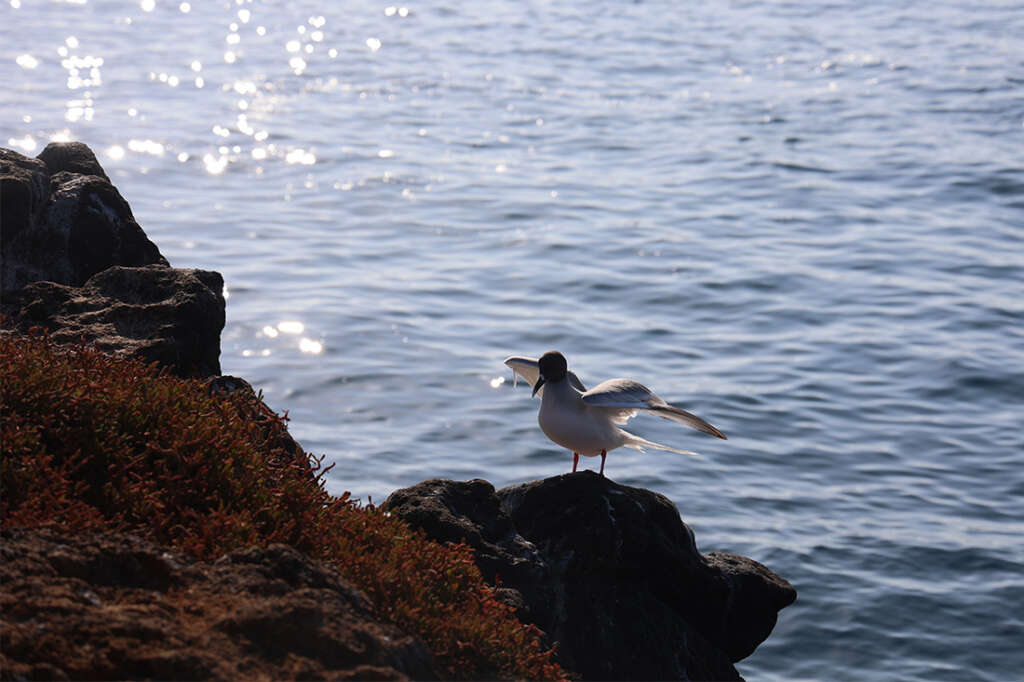
Photo © Dandelion Chandelier.
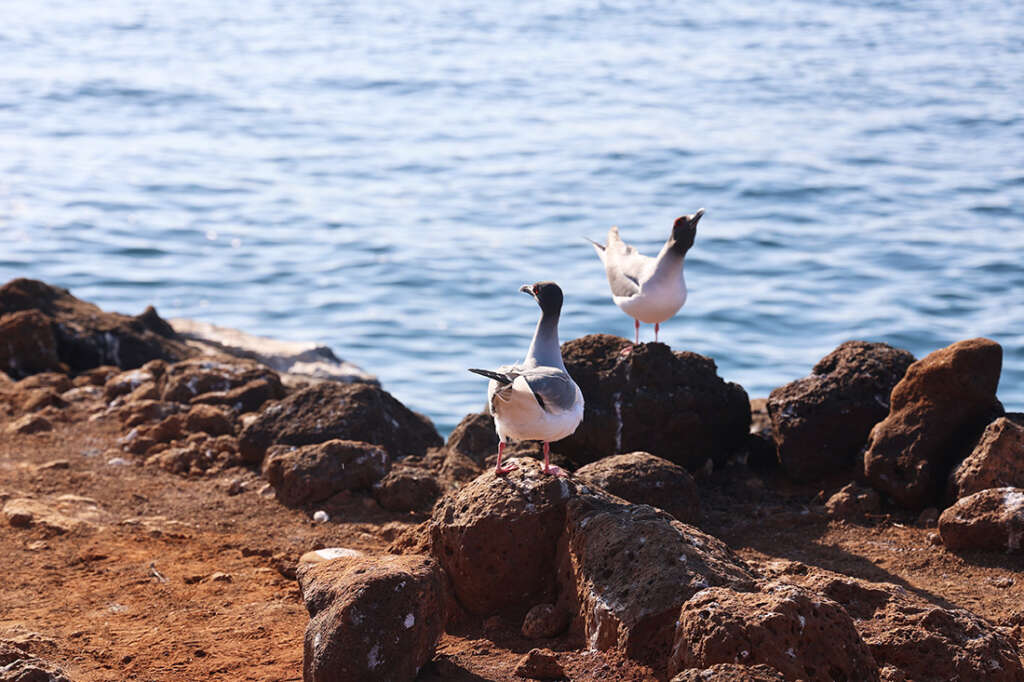
Sea birds on North Seymour Island in the Galapagos. Photo © Dandelion Chandelier.
The island is arid, so the topography features prickly pear cacti and and reddish brown volcanic boulders, with very little other vegetation. There are, however, groves of Palo Santo – or “incense trees.”
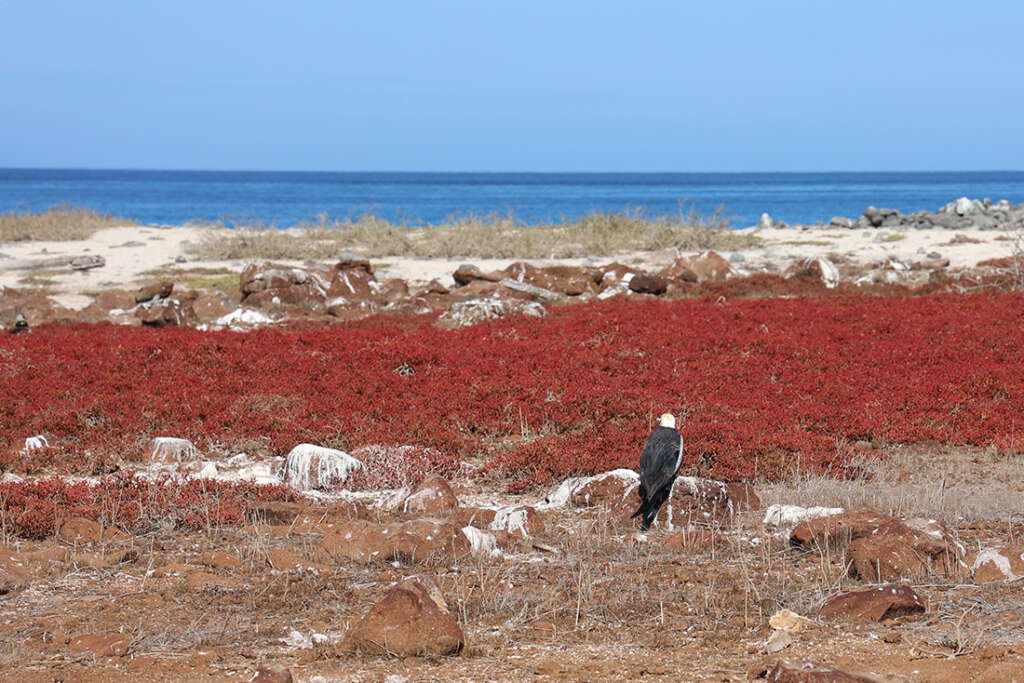
North Seymour Island in the Galapagos archipelago. Photo © Dandelion Chandelier.
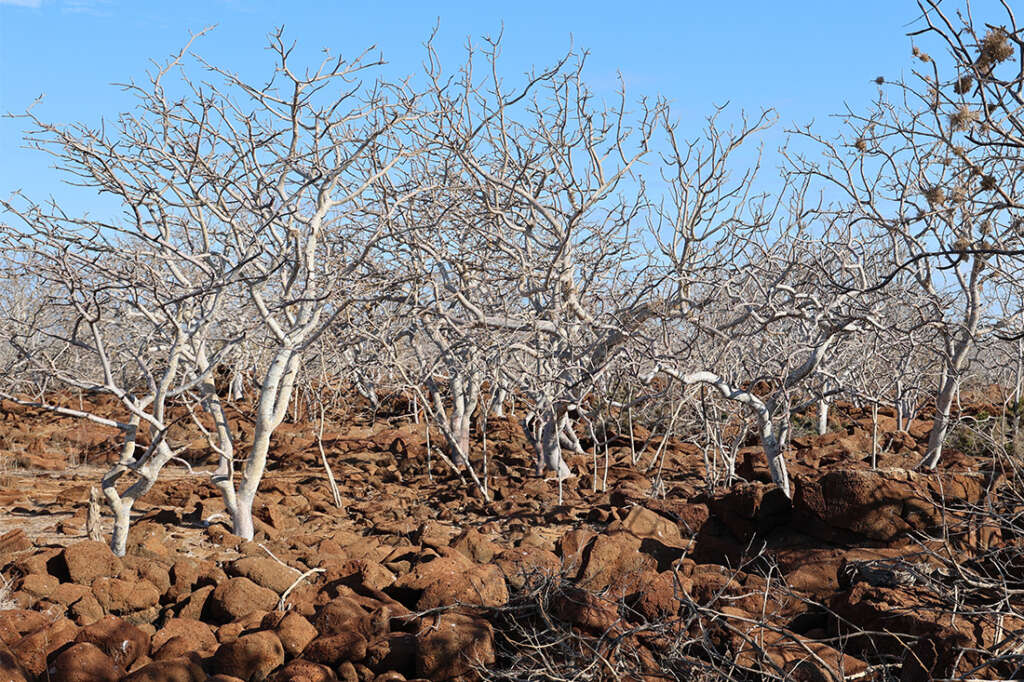
Photo © Dandelion Chandelier.
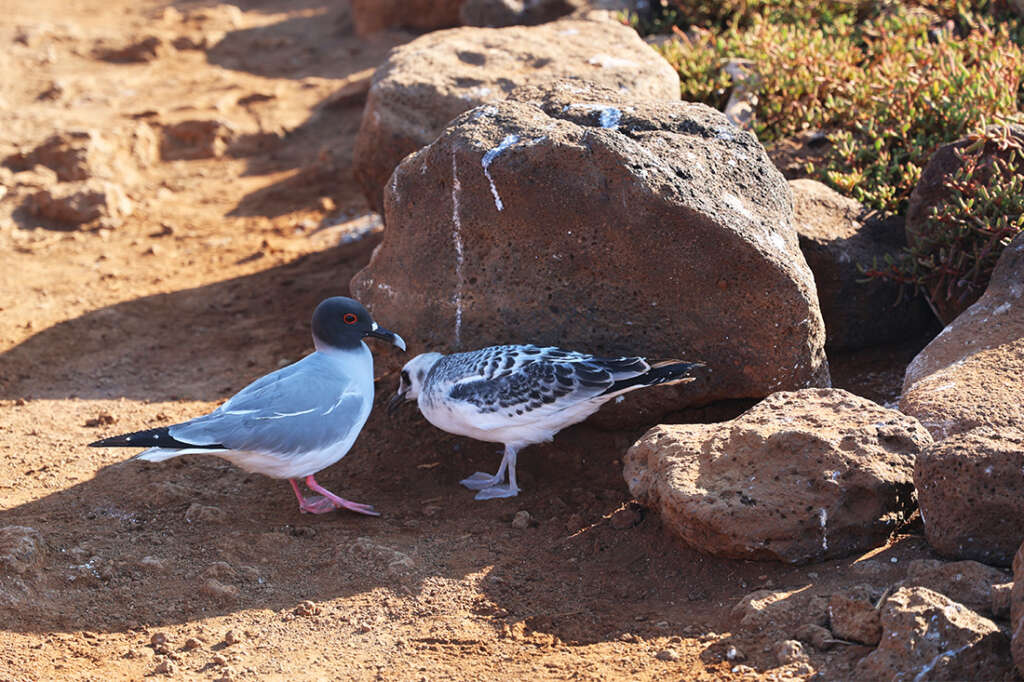
Photo © Dandelion Chandelier.
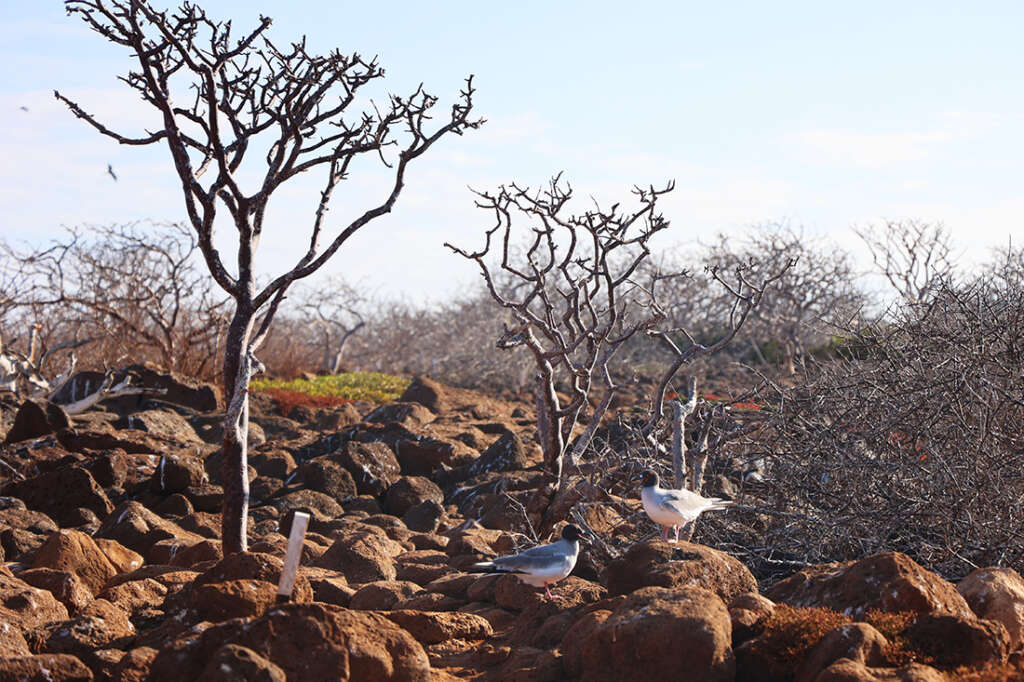
North Seymour Island in the Galapagos. Photo © Dandelion Chandelier.
Among the denizens of North Seymour Island are our favorites, the Blue-Footed Boobies. During their mating season, they perform a ritualized mating dance that reinforces their pair bond and shows off their vivid blue feet. We would have dearly loved to see that! Dancing Blue-Footed Boobies? Stop it. Spoiler alert: we didn’t spot any. Really bummed about that. But we saw plenty of other cool things.
Marine Iguanas
While we became used to seeing them on the shoreline, marine iguanas can also thrive further inland. On North Seymour Island we found several of them deep in the trail through an arid landscape.
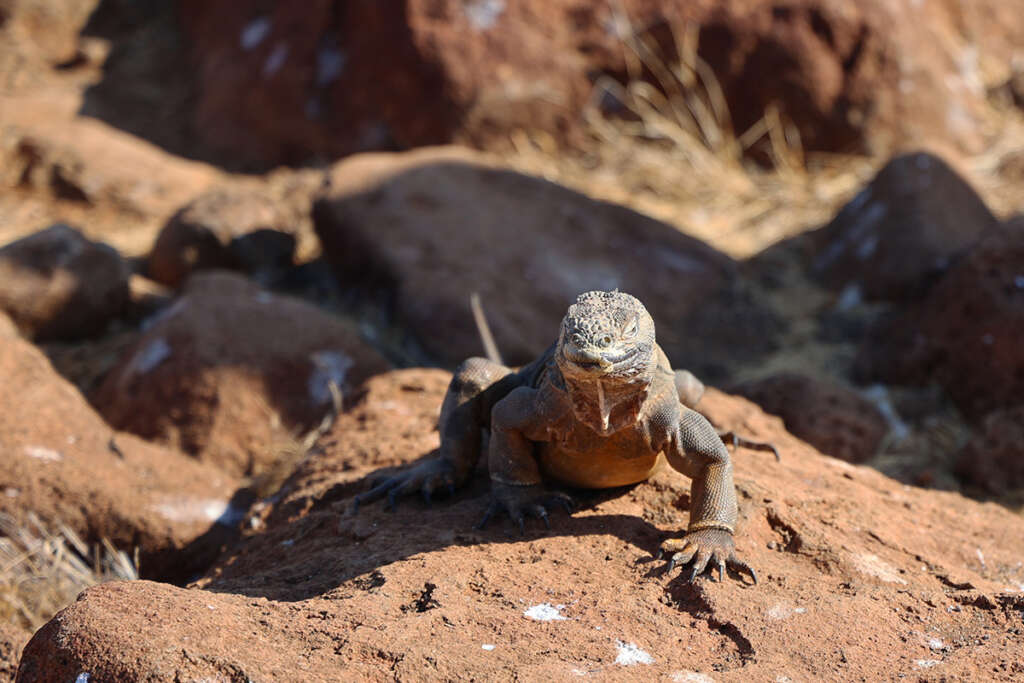
Marine iguana on North Seymour Island in the Galapagos. Photo © Dandelion Chandelier.
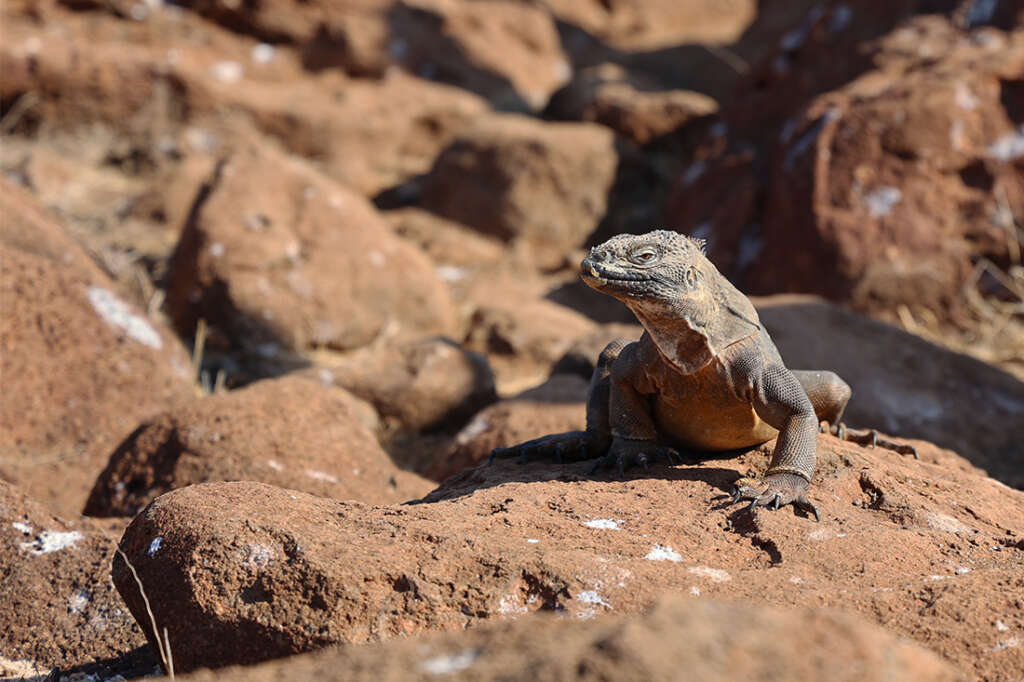
Photo © Dandelion Chandelier.
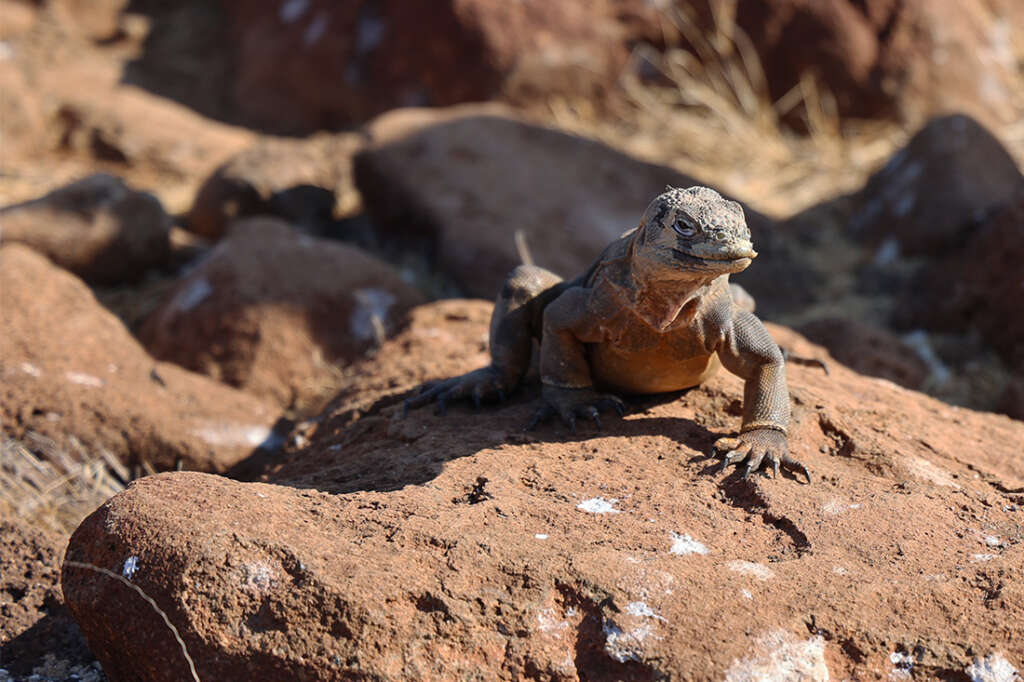
Marine iguana on North Seymour Island in the Galapagos. Photo © Dandelion Chandelier.
One intrepid marine iguana decided to climb a prickly pear cactus along the trail.
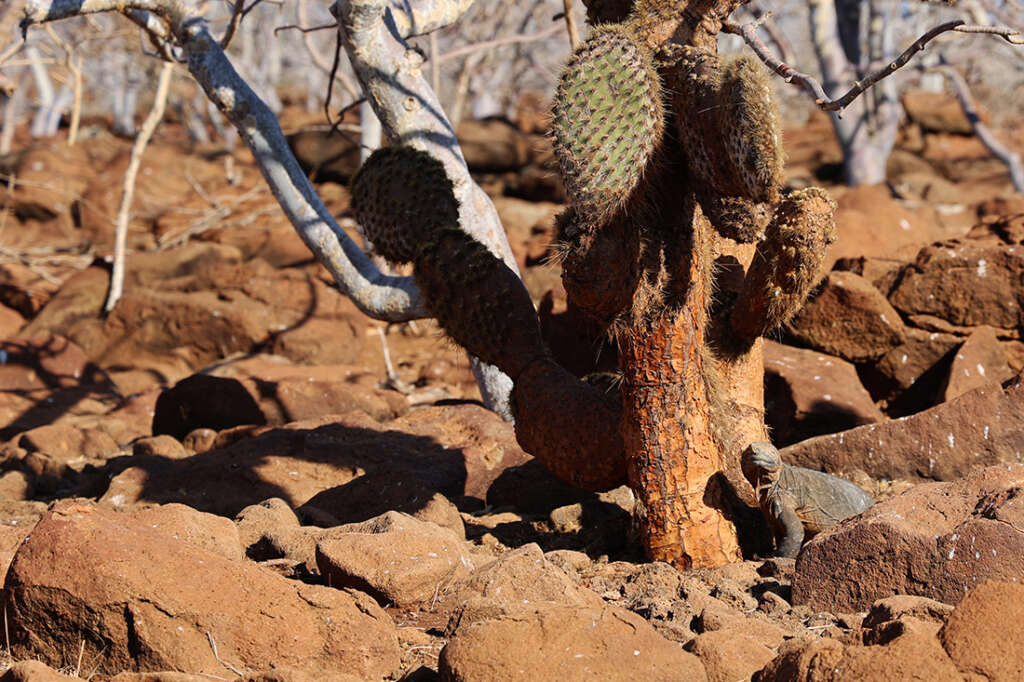
Photo © Dandelion Chandelier.
He/she/they seemed quite pleased with the outcome.
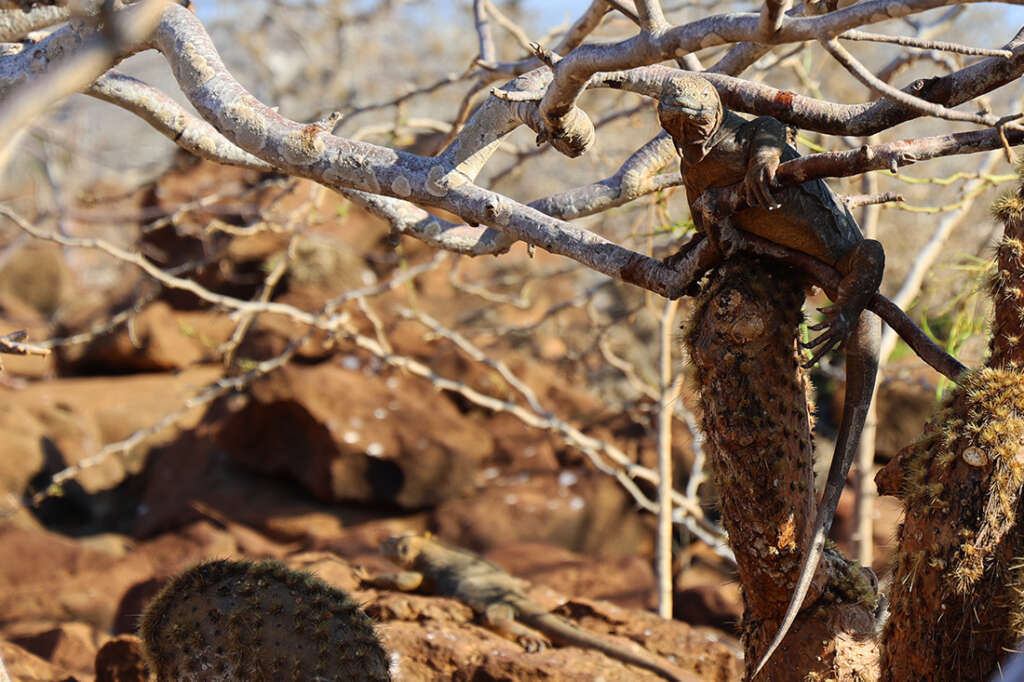
Photo © Dandelion Chandelier.
Lava lizards
As on many other islands in the Galapagos, lava lizards are omnipresent, scurrying about largely unnoticed. They’re so well camouflaged that they’re hard to spot, even if you’re keeping a sharp eye out.
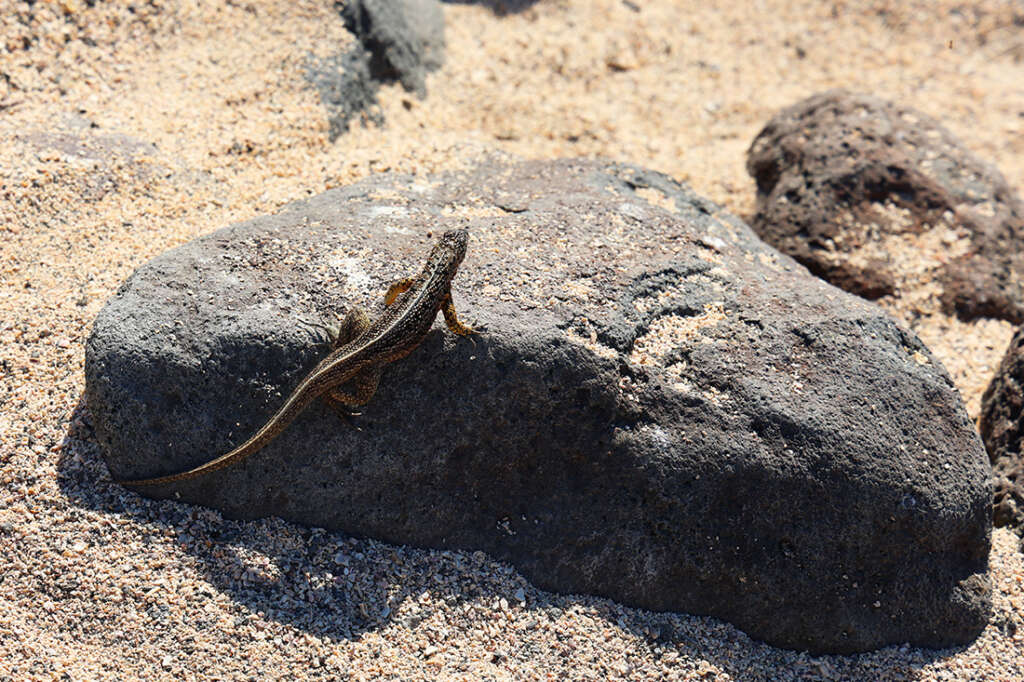
Photo © Dandelion Chandelier.
Locusts
North Seymour Island was the first place we encountered locusts in the Galapagos Islands. This one was making breakfast out of the first few budding leaves of a Palo Santo tree.
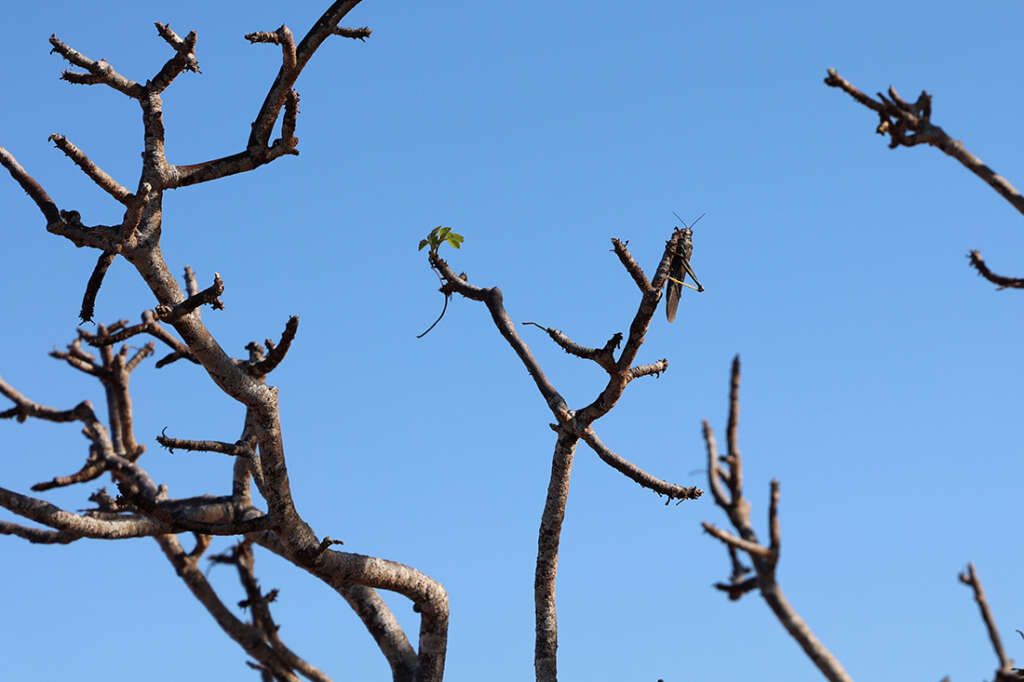
Photo © Dandelion Chandelier.
Male Magnificent frigatebirds in mating season
The main attraction on any visit to North Seymour Island is the male Magnificant Frigatebirds during mating season. We had heard about the fabled mating ritual of these gorgeous birds, but it’s even more striking than we imagined. The love look of the Magnificent Frigatebird is . . . well, truly magnificent.
male magnificent frigatebirds at rest
Whether viewed from the air or while resting in the foliage, the male Magnificent Frigatebirds are absolutely gorgeous.
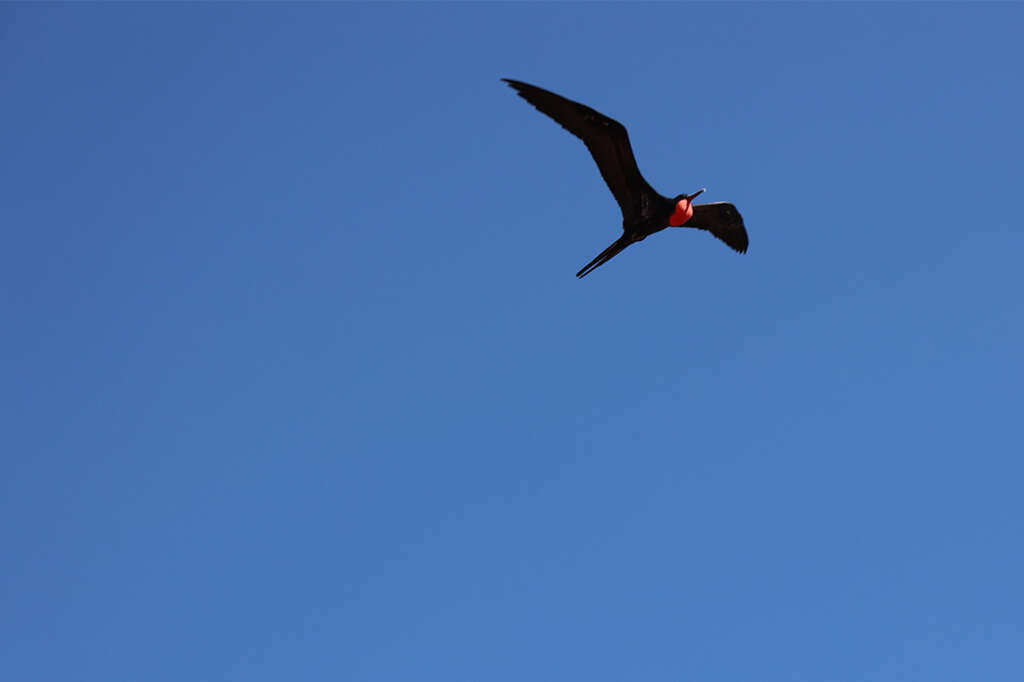
Male Magnificent Frigatebird on North Seymour Island in the Galapagos. Photo © Dandelion Chandelier.
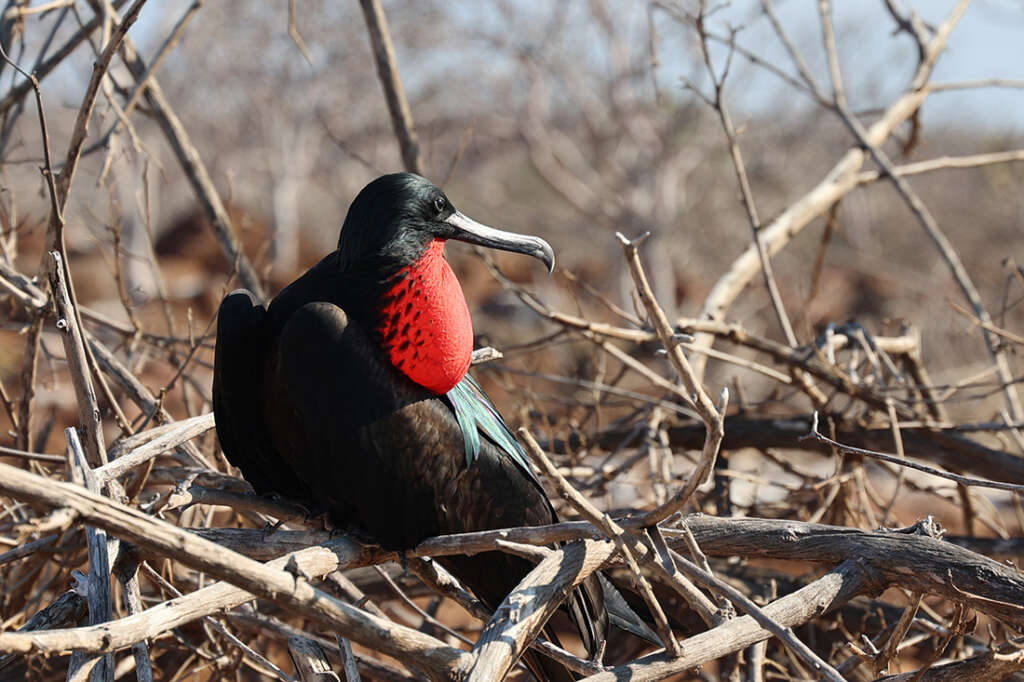
Photo © Dandelion Chandelier.
We have always loved looking at bird feathers, and the plumage of the male Magnificent Frigatebird is just beautiful. From afar they appear to be all black, but up close you can see the glossy deep green feathers on their backs, in addition to their red gular sacs and deep black plumage..
We happened to visit over the Christmas holiday and it wasn’t lost on us that the red and green were perfect for the season.
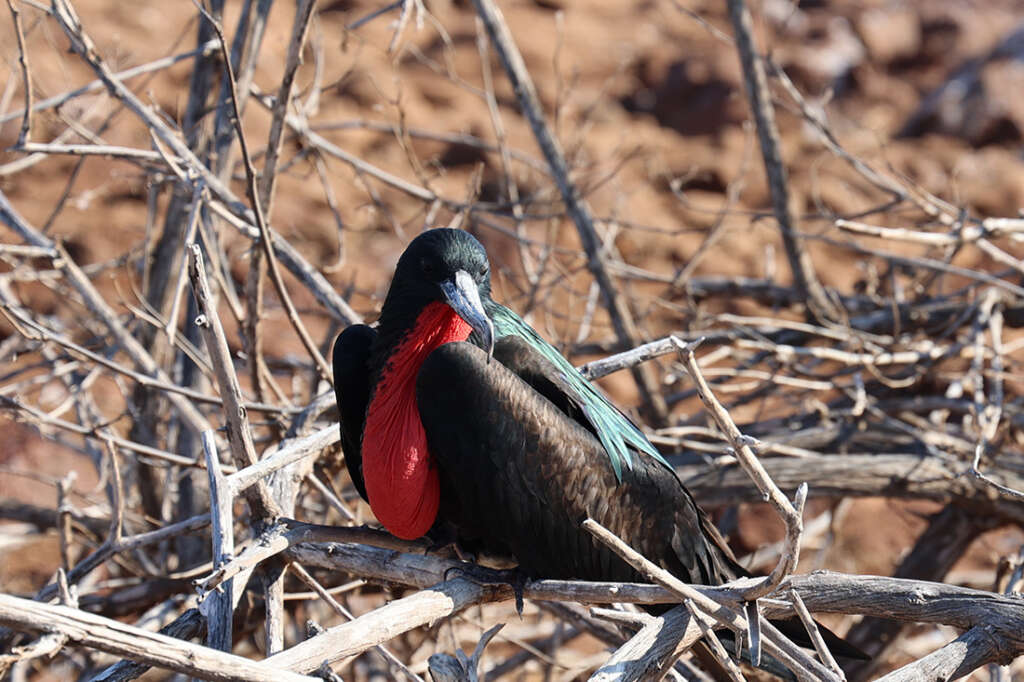
Male Magnificent Frigatebird on North Seymour Island in the Galapagos. Photo © Dandelion Chandelier.
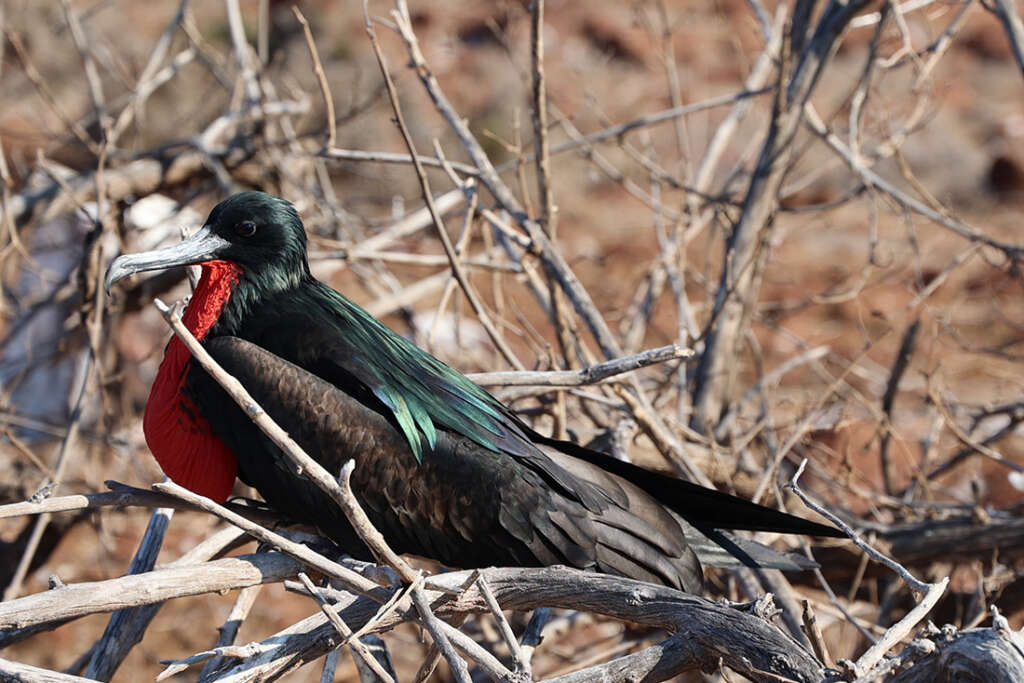
Photo © Dandelion Chandelier.
male magnificent frigatebirds fully inflated
It takes about 20 minutes for the male to fully inflate his bright red gular sac. When it’s fully inflated it often takes on the shape of a heart. When the light hits the bird just the right way, you can see his veins and blood vessels very clearly.
It’s a truly impressive sight, and that’s only the beginning. Once a male attracts the attention of a female, he still has to convince her that he’s strong and capable. Which seems only fair, in our humble opinion.
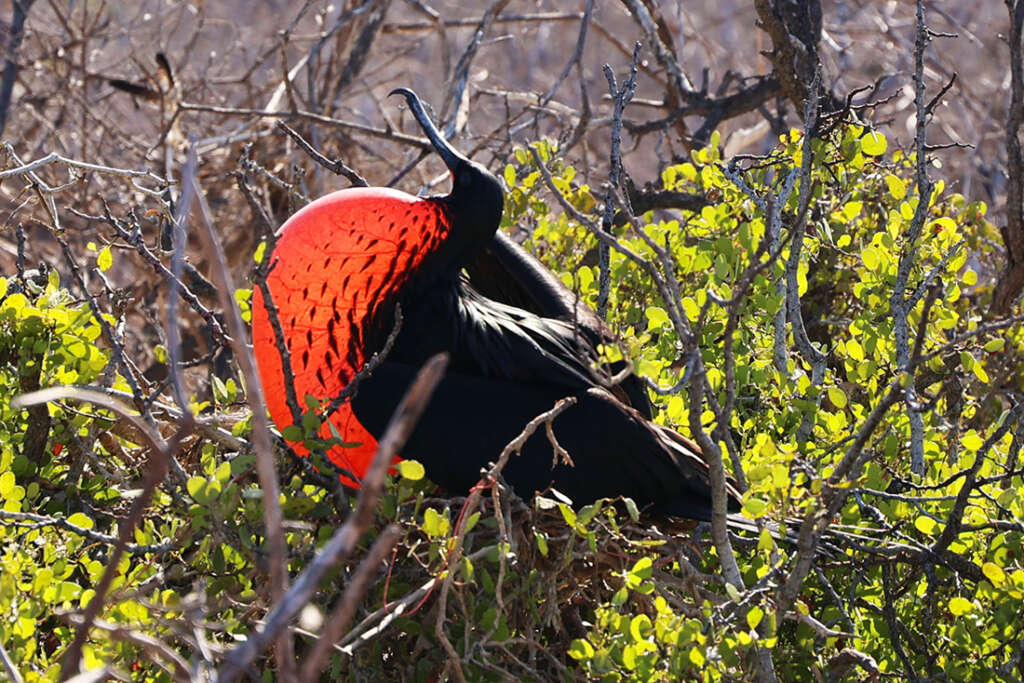
Photo © Dandelion Chandelier.
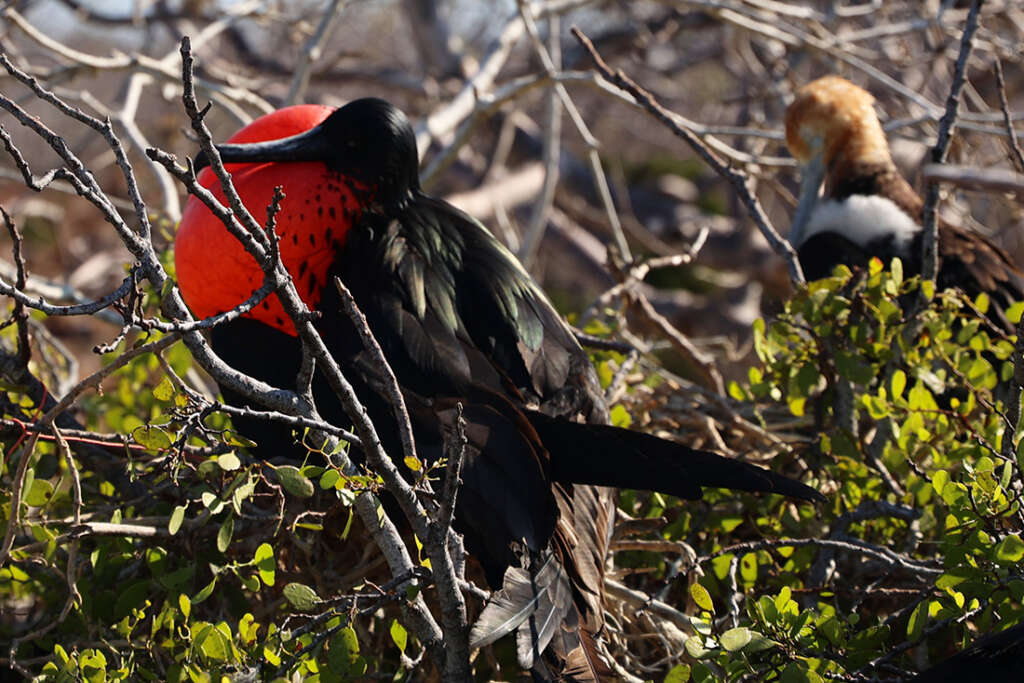
Male Maginificent Frigatebird on North Seymour Island in the Galapagos. Photo © Dandelion Chandelier.
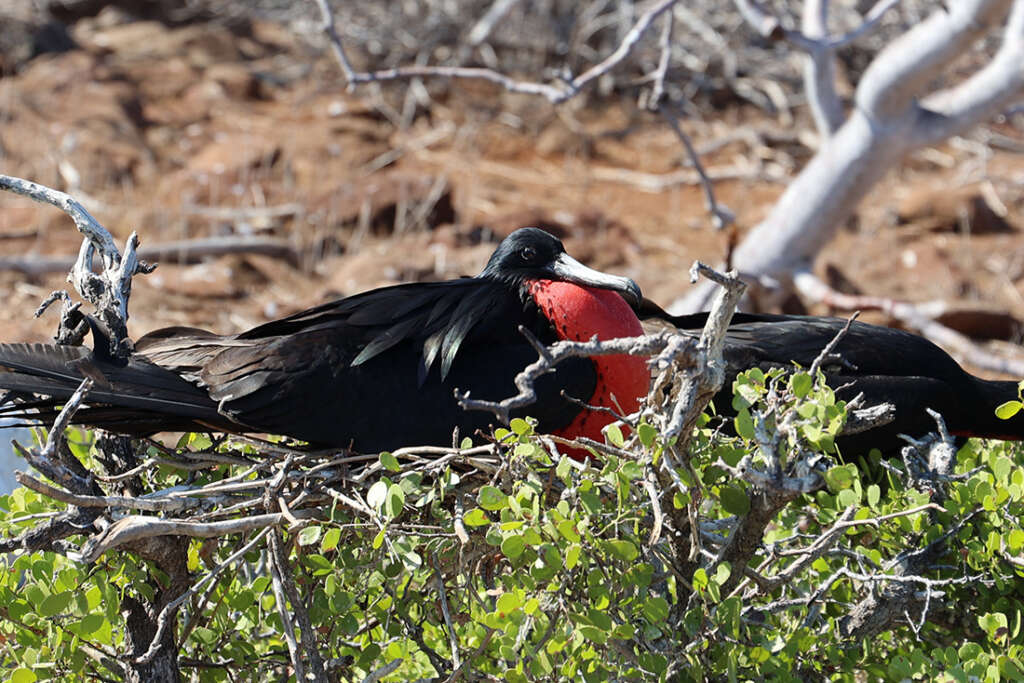
Photos of North Seymour Island in Galapagos with mating sea birds including male Magnificent Frigatebirds with red sacs. Photo © Dandelion Chandelier.
female and juvenile frigatebirds
We spotted a few baby frigatebirds, and several juveniles. The juvenile males have a much lighter coloration – they don’t become fully black until they are fully mature.
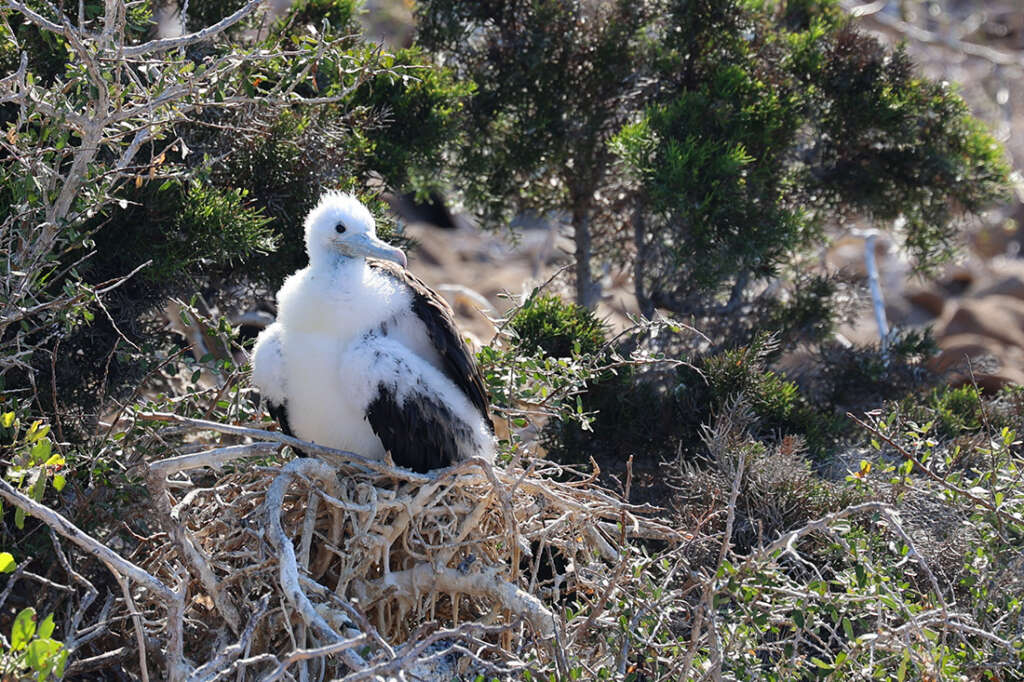
Photo © Dandelion Chandelier.
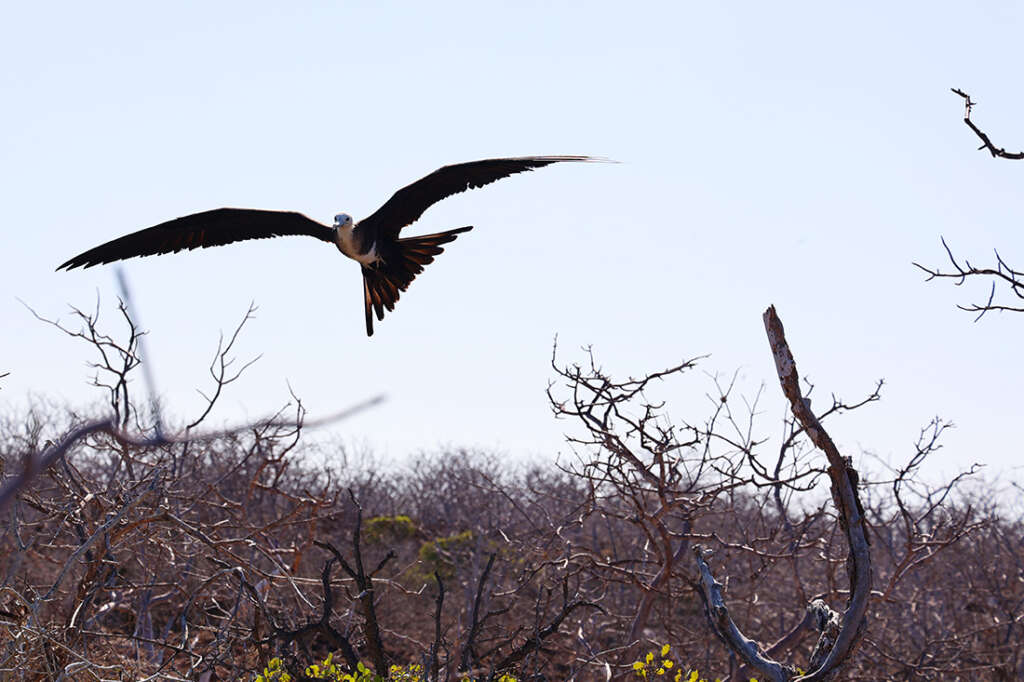
Photo © Dandelion Chandelier.
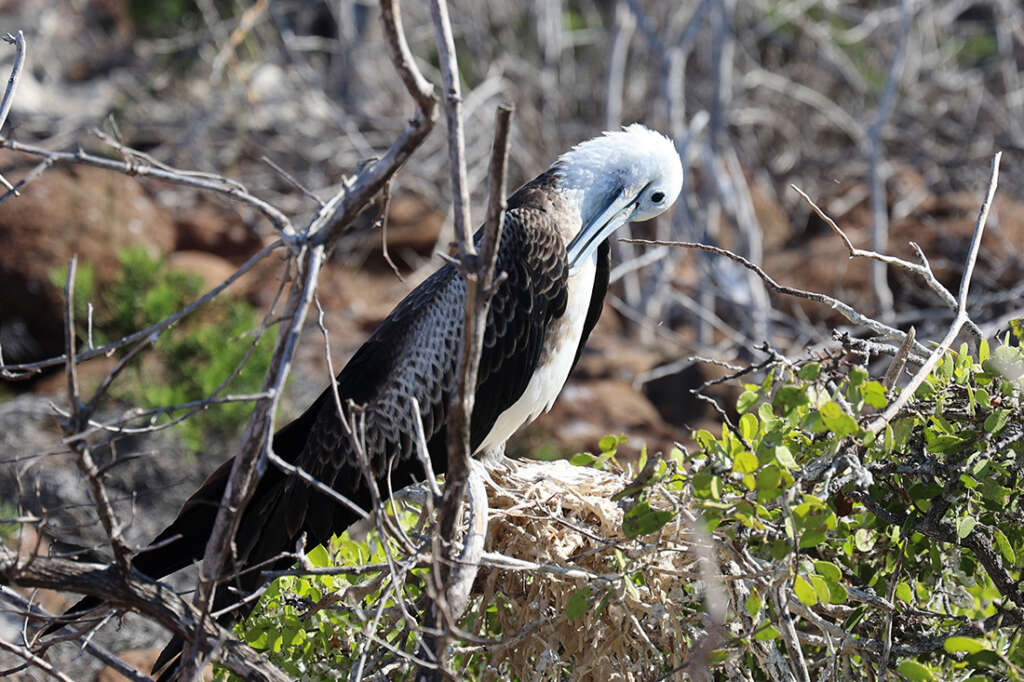
Photos of North Seymour Island in Galapagos with mating sea birds including male Magnificent Frigatebirds with red sacs. Photo © Dandelion Chandelier.
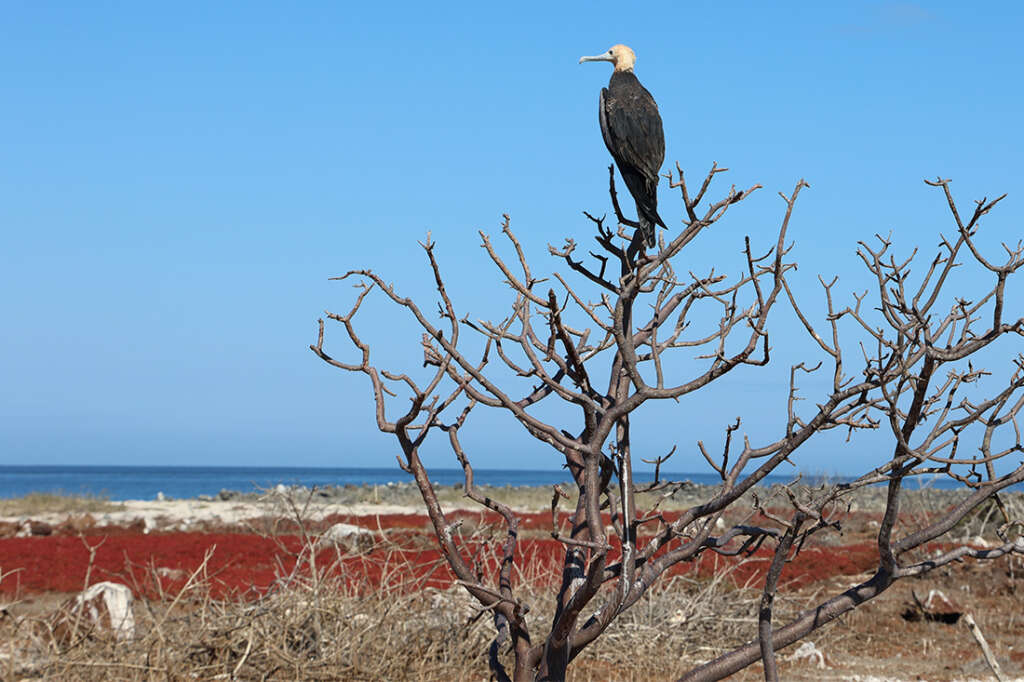
Juvenile frigatebird on North Seymour Island. Photo © Dandelion Chandelier.
Seabirds and sea lions
Closer to the shore of North Seymour Island we spotted several other species of seabird, including the brown pelican. We also encountered a female sea lion making her way toward the shore.
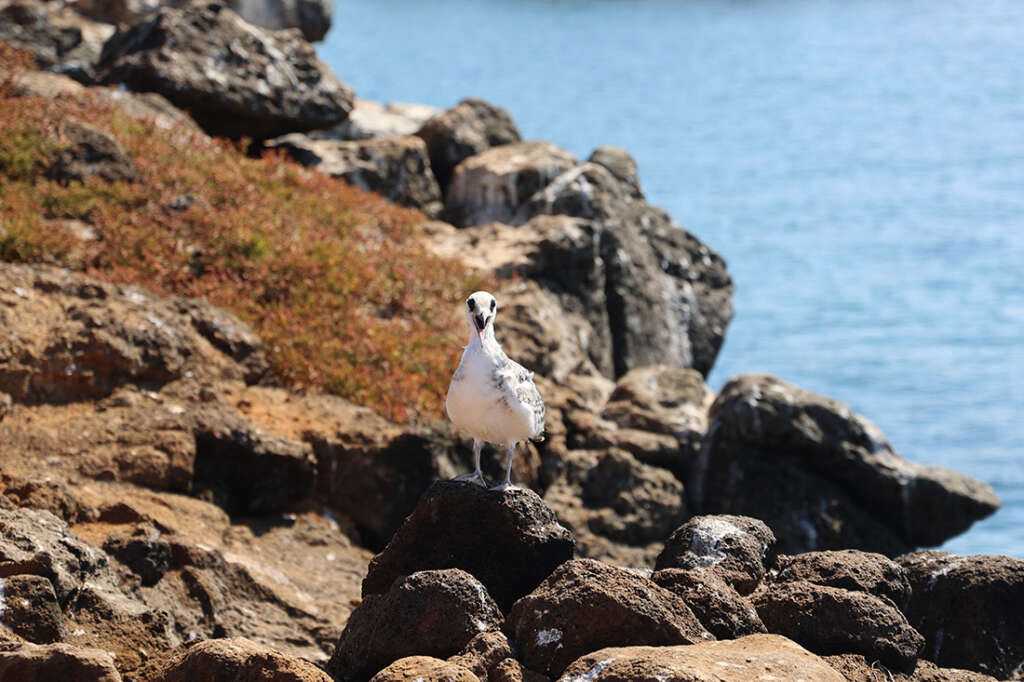
Photo © Dandelion Chandelier.
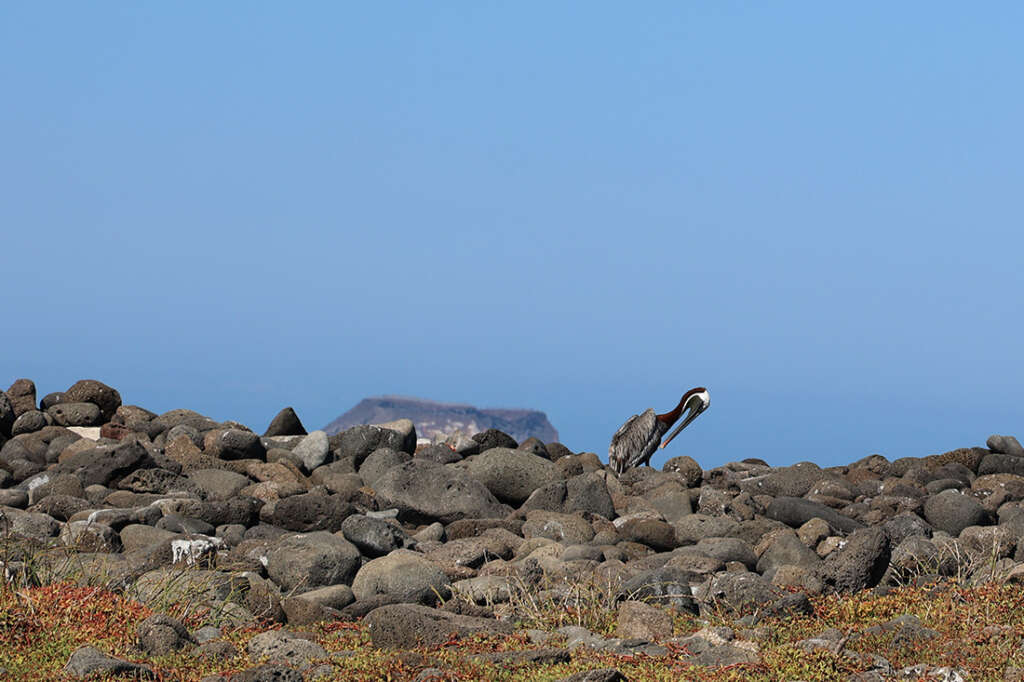
Brown pelican on North Seymour Island. Photo © Dandelion Chandelier.
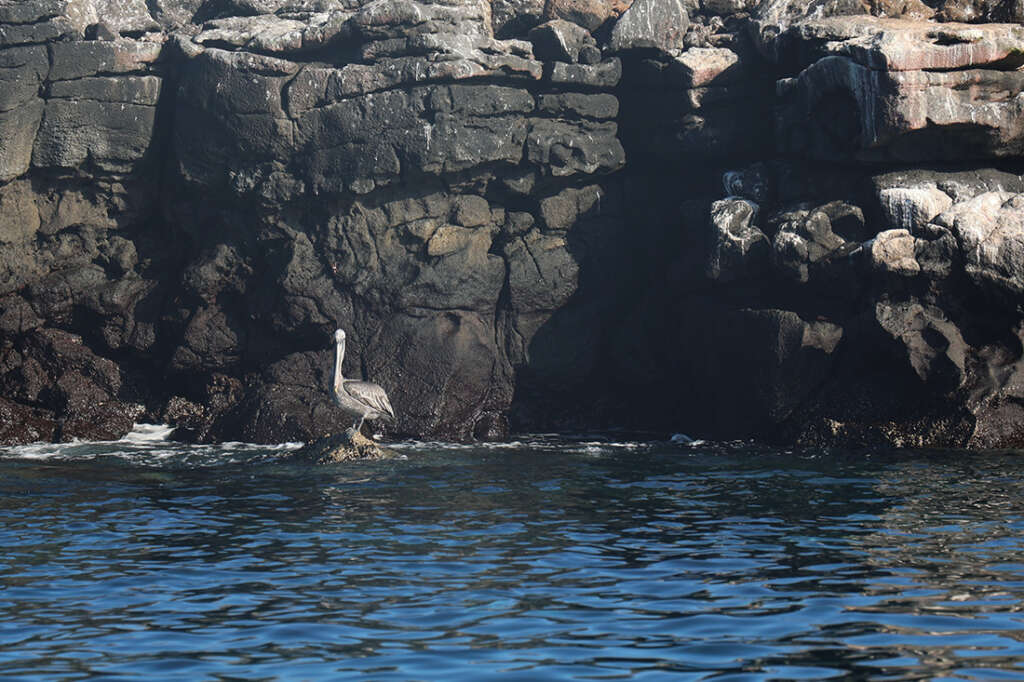
Brown pelican on North Seymour Island. Photo © Dandelion Chandelier.
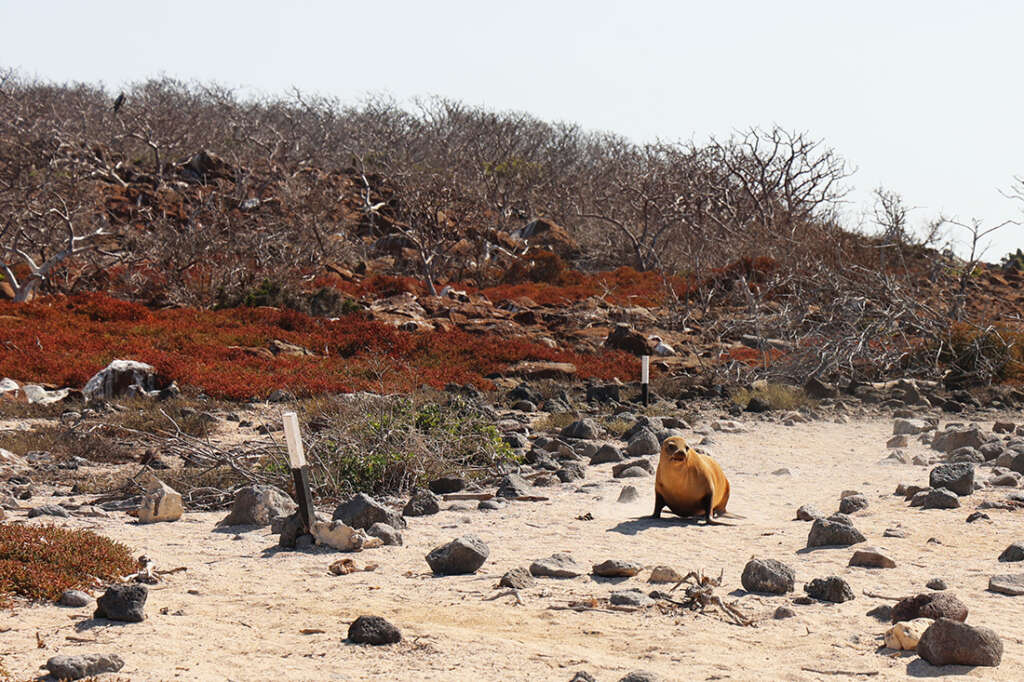
Female sea lion. Photo © Dandelion Chandelier.
north seymour island in the galapagos
Those are our best photos from a recent hike on North Seymour Island in the Galapagos, which is home to marine iguanas, locusts, lava lizards, and mating sea birds, including the male Magnificent Frigatebird with its red sac. It’s a site not to be missed, so if you have the chance to visit, take it, dear reader. We were disappointed not to see the mating dance of the Blue-Footed Boobies. We’ll just have to make another trip, as that sounds like something that has to be seen to be believed.
